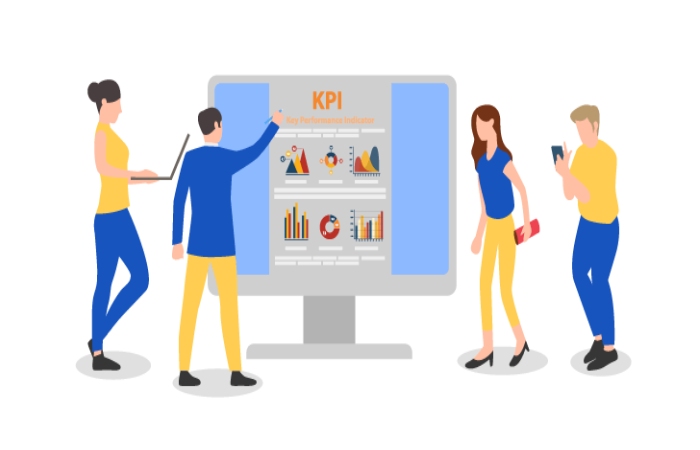Table of Contents
Key Performance Indicators(KPIs)
Key Performance Indicator (KPIs) is a number one performance measure used to set goals and quantify effects. A KPI, an acronym from the English word key performance indicator (key performance indicator), is a quantitative metric that suggests how your crew or organization is progressing towards your most important business dreams. So, agencies use KPIs at various stages. You can set corporation-extensive, group-unique, or person KPIs, relying on the metrics you want to track. A suitable KPI can come up with a concept of whether or not you’re on the proper song to reaching your strategic dreams.

Importance of KPIs
Key performance indicators shed light on a company’s performance. Without KPIs, it would be difficult for company leaders to meaningfully assess and then make operational changes to address performance issues. Therefore keeping employees focused on business initiatives and tasks critical to the organization’s success can be difficult without KPIs to reinforce the importance and value of those activities. In addition to highlighting business successes or problems based on current and historical performance measurements, KPIs can point to future results, giving executives early warning of potential business problems or maximizing return on investment. Can provide initial guidance on opportunities. Armed with such statistics, they can proactively manipulate business operations, potentially gaining a aggressive benefit over much less information-pushed competitors.
Advantages Of Measuring Key Performance Indicators (KPIs)
Here we show you the benefits of measuring KPIs:
- Track your customer interactions throughout the buyer’s journey.
- Improve your campaigns and future measurement plans.
- Report your goals and results.
- Troubleshoot your website performance and more.
Here are some examples of the KPIs that are often tracked in the pillars of digital marketing:
Site performance/user experience (UX)
- New visitors versus repeat visitors.
- Pages per visit.
- The total views of the page.
- Bounce rate.
- The average duration of the session.
Search engine optimization (SEO).
- Clicks
- Click Through Rate (CTR).
- Organic search traffic.
- Referred traffic.
Social networks
- I like it
- shared
- Comments
- Mentions
- reach
conversions
- The conversion rate of potential customers.
- The cost per potential customer.
- The price per acquisition.
- The cost of customer acquisition.
- The value of a customer for life.
KPI Type
KPIs that quantity the results of business activities, such as periodical revenue and revenue growth. So it’s called a lagging indicator. Because it will follow what happened. Therefore comparing KPIs announcing upcoming business developments—for example, Booking sales that will generate revenue in future quarters—are called leading indicators.
There is also a distinction between numerical quantitative and qualitative metrics that are more abstract and open to interpretation, such as evaluating user experience with the product or on the website. For qualitative indicators, identifying useful KPIs can be challenging. Therefore choosing the right one depends on the organization’s ability to measure it in some way. For example, the percentage of wild transactions in an online shopping cart could indicate the customer experience on a retail website.
From a functional perspective, KPIs cover financial, marketing, sales, customer service, manufacturing, and also supply chain metrics. KPIs can also track presentation metrics related to internal processes such as HR and IT operations.
How to Measure KPIs
Without comparative marketing efforts, it is more challenging to measure success. So follow these five steps to measure KPIs:
1. Set business goals
Before you continue the process of data collection and KPI analysis, you should have a plan to measure your performance in defining your business goals. So these may include growing your brand awareness, increasing your social media presence, or improving your conversion rates.
2. Choose your marketing strategy
Your advertising strategy, as well as the strategies and tools that you use, will no longer best help you attain your desires however additionally have an effect on the KPIs that you use to monitor overall performance. For instance, if you need to apply social media advertising as one in all your networks, use the model KPIs listed beneath.
3. Select key performance indicators
To avoid info overload, choose, monitor and report a certain number of KPIs. So these KPIs will line up with your business goals. Therefore, you will know if you are meeting your objectives.
4. Organize and segment your data
Various analytics tools provide a way to section data to make it easier to assess changes in KPIs and determine their causes. Examples of segments include operating or device systems and user characteristics.
Conclusion
KPI targets help you set and achieve measurable goals in a company. Before you start, ensure you have a clear goal or strategic plan you want to accomplish with this KPI or the set of KPIs you define. Once you have described your KPI, share it with the key project stakeholders. It also shares real-time updates so that everyone can stay informed on progress.
Also Read: What is App Development?
Related posts
Featured Posts
What is High-speed Internet?
High-Speed Internet High-velocity Internet, also referred to as broadband Internet, is defined via the Federal Communications Commission (FCC) as Internet…
What is Bitcoins-Era?
Bitcoins-Era is a trading podium that uses a sophisticated artificial intelligence system capable of analyzing the market and autonomously buying…


